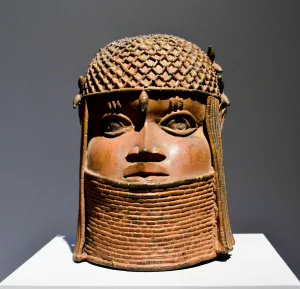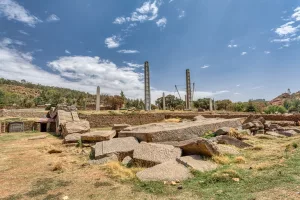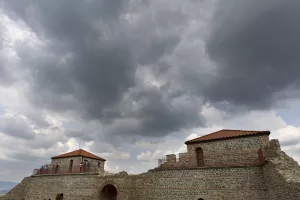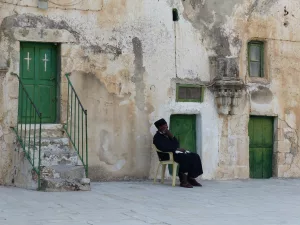7 IMPORTANT ANCIENT AFRICAN CIVILIZATIONS
According to modern studies, the Cradle of Humankind is found in modern-day South Africa and some of the oldest learning centers in the world spread across the continent. History and culture abound on the continent of Africa, with numerous ancient civilizations that have left their mark. Human civilization has benefited immensely from the contributions of these civilizations, and their impact can still be felt today. This blog post will examine 7 Important Ancien African civilizations.
That said, there were plenty of African kingdoms and empires throughout the continent; regional and political powerhouses similar to those we find in our history books today. The seven most poular of them in no particular order include ;
- Carthage
- The Benin Empire
- The Aksumite Empire
- The Kingdom of Ghana
- The Mali Empire
- The Ethiopian Empire
- The Kingdom of Zimbabwe
Carthage
Location – Tunisia
Time – In what is now Tunisia, Carthage was the capital city of ancient Carthage.
To open our list of 7 IMPORTANT ANCIENTS AFRICAN CIVILIZATIONS is Carthage. Carthage dominated the Mediterranean for centuries as a powerful ancient African civilization. At the time of ancient Egypt, its naval power and military prowess similarly made it a formidable force. Known for its magnificent architecture and art, including its mosaic floors, the city was well known for its charm.
Although Carthage was not the first Phoenician settlement in the region, Utica may have been half a century older, and various traditions concerning the founding of Carthage were shared among Greeks, who called the city Karchedon. Despite this, the Roman tradition is better known because of the Aeneid, which tells how Dido fled her brother Pygmalion (a historical Tyrean king) in order to found the city.

The Benin Empire
Location – Nigeria
Time – circa 1180 CE – 1897 CE
The Benin Empire, located in modern-day Nigeria, was one of the oldest and most developed states in West Africa until it was annexed by the British Empire. A number of famous artisans crafted masterpieces from ivory, bronze, and iron. Portuguese traders had a strong relationship with the Benin Empire. As a form of currency in West Africa, they exchanged palm oil, pepper, and ivory for Manilla (a form of currency). It was even possible to send an ambassador to Lisbon over the course of the 16th century because of the relationship. Britain’s first expedition to Benin occurred in 1553. A mutually beneficial trading relationship existed throughout the 16th and 17th centuries until Benin suspected Britain of making controlling advancements. Dutch, British and Portuguese explorers brought numerous tales back to Europe of the beauty, wealth and sophistication of Benin.

The Aksumite Empire
Location – Ethiopia, Eritrea, Djibouti, Egypt, Saudi Arabia, Somalia, South Sudan, Sudan, and Yemen
Time – circa 100 CE – 960 CE
Axum is one of the 7 IMPORTANT ANCIENTS AFRICAN CIVILIZATIONS that thrived in what is now Ethiopia. It was known for its impressive stone structures, including obelisks and stelae. Axum was also a major center of trade, with its merchants trading with other civilizations across the Red Sea. Aksum (or Axum) is the oldest African kingdom on this list, also known as the Kingdom of Aksum. During the reign of this kingdom, farming was practiced in areas that are currently Ethiopia and Eritrea. Evidence of farming dates back 10,000 years.
In ancient India, the Aksumites were important players in the commercial trading routes between the Romans and the Aksumites. They were considered one of the four great powers of their time alongside China, Rome, and Persia. The Aksumites erected several stelae (stone wooden slabs acting as monuments in pre-Christian times) during their reign but one of them is the most famous of all. Standing at 79 feet, the Obelisk of Axum is approximately 1700 years old and is found in present-day Axum, Ethiopia.

The Kingdom of Ghana
Location – Spread across parts of what is now Mauritania, Senegal, and Mali
Time – circa 700 CE – 1240 CE
Ghana was an ancient African civilization that existed in what is now Mali and Mauritania. It was known for its wealth and power, with its rulers controlling the trans-Saharan trade routes. Ghana was also known for its impressive architecture and art, including its famous goldsmiths. Commonly known as Wagadu, this African kingdom also served as an important stop along the trans-Saharan trade route, connecting African societies in the Sahel to markets along the Mediterranean Sea coastline. Despite switching capital cities several times, Koumbi Saleh held the title of largest city south of the Sahara Desert. Its peak population was between 15,000 and 20,000, a phenomenal number for a city with limited water resources. It was they who traded gold and kola nuts (which became the secret ingredient of Coca-Cola centuries later). As a result of becoming part of Mali around 1240, the Kingdom of Ghana’s decline was accelerated.

Also Read
- “Things Fall Apart” by Chinua Achebe : An Honest Review
- Unleash Your Inner Adventurer : 7 Thrilling Things to Do in Olumurin
- Introducing Ilẹ̀ Adúláwọ̀
- A trip to Erin Ijesha Waterfalls (See photos and Video)
The Mali Empire
Location – Spread across parts of what is now The Gambia, Guinea, Guinea-Bissau, Ivory Coast, Mali, Mauritania, Niger, Senegal
Time – circa 1230 CE – 1670 CE
Mali is one of the 7 IMPORTANT ANCIENTS AFRICAN CIVILIZATIONS. Mali was an ancient African civilization that existed in what is now Mali and parts of Senegal, Mauritania, and Guinea. It was known for its wealth and power, with its rulers controlling the trans-Saharan trade routes. Mali was also known for its impressive architecture and art, including its famous mud-brick structures. Malian gold mines similarly provided approximately 50% of the Old World’s gold supply by the end of the 1200s after Ghana traded in gold. Malian Empire’s most famous ruler, Mansa Musa, was the richest African king, even by today’s standards. According to records, Mali was the world’s largest gold producer during his reign, making him one of history’s richest people.

The Ethiopian Empire
Location – Spread across parts of what is now Eritrea and Ethiopia
Time – circa 1137 CE – 1975 CE
Throughout the Middle Ages and Cold War, the Ethiopian Empire (or Abyssinia) dominated Africa and established itself as one of the 7 IMPORTANT ANCIENTS AFRICAN CIVILIZATIONS. The country has also witnessed some of the most tumultuous events in modern history. A number of enemies attempted to encroach on its territory, including the Ottomans, the Italians, and also the Egyptians. Legend tells us that its leaders are descendants of King Solomon.During the Scramble for Africa which saw European powers asserting colonial authority across African territories, Ethiopia successfully fought off and defeated Italy in the First Italo-Ethiopian War. The empire’s decline began when they lost the Second Italo-Ethiopian War in 1935. The monarchy was finally abolished in 1974 by a military junta.

The Kingdom of Zimbabwe
Location – Zimbabwe
Time – 1220 CE – 1450 CE
The Great Zimbabwe, a collection of stacked boulders, stone towers, and defensive walls crafted from granite blocks, is also one of the most impressive monuments in sub-Saharan Africa. In the long history of the region, there have been countless myths, legends, and fables about the rock citadel. Similarly, it was once thought to be the residence of the Biblical Queen of Sheba, however historians now know it to have been the capital city of an indigenous empire that lived between the 13th century and the 15th century in the region. In the old days, this kingdom ruled a large part of the modern day countries of Botswana, Zimbabwe, and Mozambique also.
On the other hand, it stood astride a trade route that also connected the region’s gold fields to ports on the Indian Ocean coast in the region, which was particularly rich in cattle and precious metals. Despite the fact that little is known about its history, Chinese pottery, Arabian glass, and European textiles have been found here, which suggest that it was once a well-connected mercantile center with a wide range of goods. There were approximately 20,000 people living in the Great Zimbabwe fortress city in its heyday, but it was mysteriously abandoned sometime in the 15th century after the kingdom went into decline, but in its heyday it would have accounted for a large portion of the population

